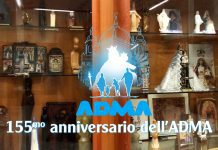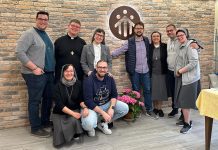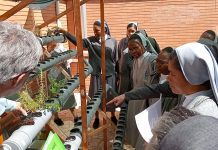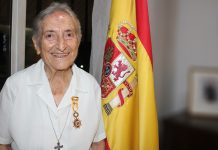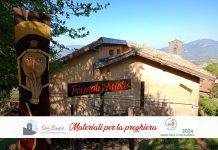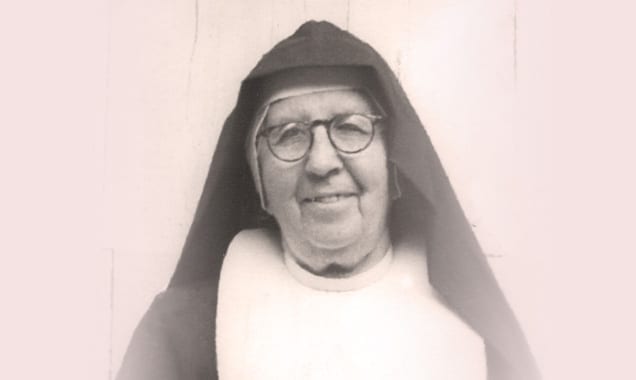Rome (Italy). In line with the Synod on: Young People, Faith, and Vocational Discernment (Cf. Working Document nos. 213-214), in the month of May, we share the eighth study on the journey of accompaniment in the youth of Saints, Blesseds, Venerables, and Servants of God.
Sister Maria Troncatti “a life of hope”
Maria Troncatti enjoyed the presence of a father who was friend, close, sensitive, strong, and tender and of a mother who was full of faith and who used to say, “Happen what may, Fiat, Fiat!”. Her fiat incessantly called on the heart of God. Her father’s love was nourishment and the foundation of her self-confidence. he experienced the ‘preventive system’ from her childhood. When she was in that dangerous situation, she said, “I was not afraid because I still had in my heart the grace of the Communion of three days ago. The Lord took care of me!”. Jesus the Good Shepherd comes to us and repeats to us with serenity and firmness, “Do not be afraid” (Mark 6: 50).
Every Sunday along with her parents, Maria participated in the Eucharist, at catechism, at Vespers, and at the Eucharistic Benediction. She acquired a deep Christian formation and this helped her to open her heart more and more to the grace of a religious vocation and to cultivate a strong missionary desire to serve God in the poor. She was able to understand that “the missionary disciple is a woman or man who makes visible the merciful love of the Father, especially towards the poor and sinners”.
Because of Maria’s lively intellectual abilities, the teacher Buila created an extra level for the school to educate her intelligence and heart and help her form a firm and determined, generous missionary character. Maria began to know the Salesian Family thanks to the Salesian Bulletin that the teacher received monthly and allowed her to read in class. The Bulletin narrated the peaceful conquests of the missionaries in far away lands and the extraordinary graces obtained through the intercession of Mary Help of Christians, the Madonna of Don Bosco. This is how little Maria, like Jesus, grew in wisdom, devotion, prudence, and industriousness under the watchful eye of her father, safeguarded by the tender austerity of her mother, and guided spiritually by the Pastor.
This rich family experience imbued with Christian values will be lived later by Sr. Maria in the Equatorial lands, especially in contact with the Shuar culture of the Amazon. With gratitude and affection, the people will call her “Good little Mother” (“Madrecita buena”). From this good mother, the Shuar will easily understand all that she proclaimed. Thus she undertook with them the adventure of holiness.
The time came to make an important decision: Maria’s vocation continued to become clearer and one day she openly communicated this call first to her sister Catherine telling her, “I want to be a religious and a missionary, but do not tell anything to anyone…” On another occasion whole speaking of it with the Pastor, Fr. Bartolo, who in his attempt to help her in her discernment, told her, “You can also do much good in your town…”. But it was worse when Maria shared her choice with her parents. Her mother was silent as usual, while her father raised his voice saying, “What an extravagant idea! Who put this in your heard?”. In spite of all this, new horizons were opening in Maria’s heart and her ideal matured. Docile to the Holy Spirit she did what the Lord inspired. “Her discernment led her to recognize the concrete means that the Lord arranges in His mysterious plan of love, so that we will not stop only with good intentions”.
At 21 years of age, Maria secretly wrote a letter to Fr. Michael Rua, asking him for admission to the FMA Institute as a missionary religious. Fr. Rua passed the letter to the Superior General, Mother Catherine Daghero, and then after other arrangements were made for her admission to initial formation, Maria left for Milan on October 15. When she arrived at Nizza, she became doubtful. Maria effectively accused herself in her depths of having realized that holy ideal with some pride and presumption. She said, “I aimed too high, and now I feel incapable…”. One day Mother General asked her, “How are you, dear postulant? How is it going?” Maria did not know how to respond. The knot she had in her throat melted into tears. Mother told her, “Come with me, and we walked in the vegetable garden a while”.
All her doubts overcome, the superiors admitted Maria to vestition on August 12, 1906, and then to religious profession. On September 17, 1908, she was a Daughter of Mary Help of Christians!



